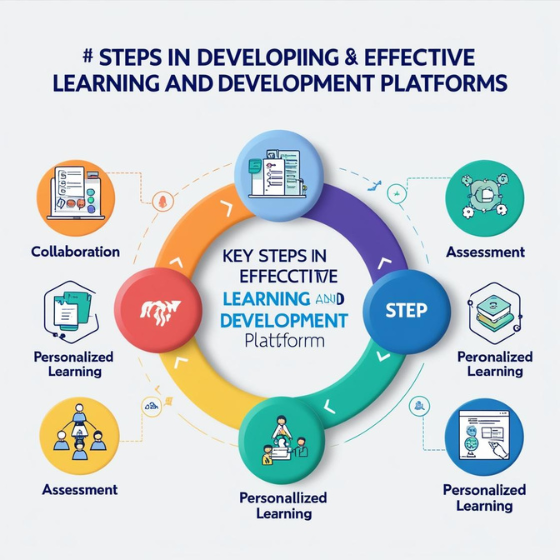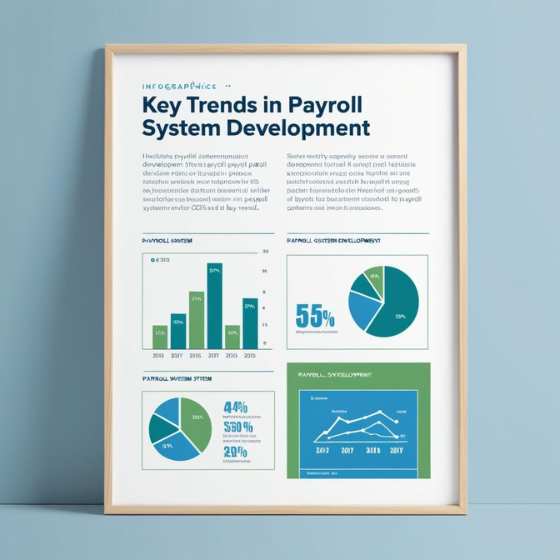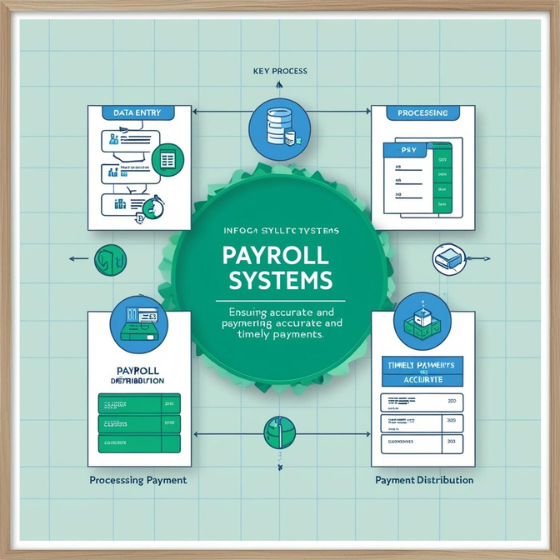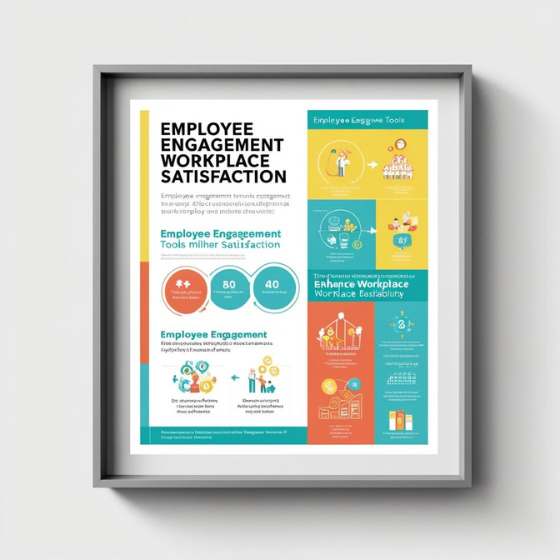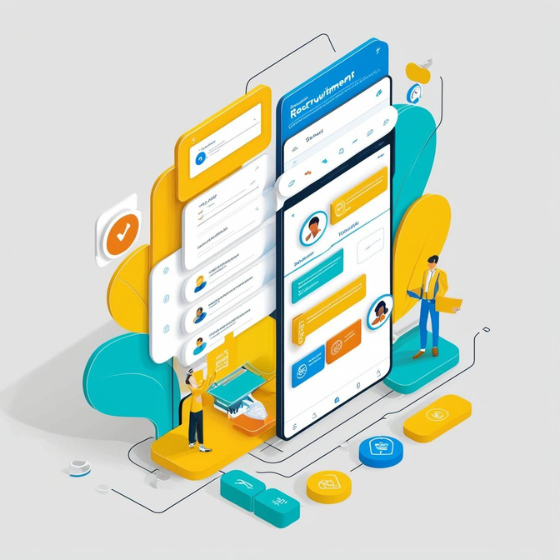How to Develop Effective Learning and Development Platforms
In today’s dynamic work environment, organizations are increasingly focusing on learning and development (L&D) as a strategic tool to enhance employee performance, engagement, and retention. A well-designed L&D platform not only helps employees grow in their roles but also contributes to the overall success of the business by improving skills, fostering innovation, and boosting morale.
However, developing an effective learning and development platform is no easy task. It requires careful planning, the right technology, and an understanding of your organization’s goals and the learning preferences of your employees. In this blog, we’ll dive into the essential steps and best practices for developing a highly effective L&D platform that supports both personal growth and organizational objectives.
1. Understand Your Learning Objectives and Business Needs
The first step in developing an effective learning and development platform is to identify your organization’s specific learning objectives. Without a clear understanding of what you want to achieve, it’s difficult to design a platform that meets the needs of both the business and the employees.
Steps to Define Objectives:
- Analyze Skills Gaps: Conduct a skills audit to identify areas where employees need development. This could include technical skills, leadership abilities, communication, or soft skills.
- Align with Business Goals: Ensure that the training objectives are in line with the company’s broader goals. For instance, if the company is expanding into new markets, you might focus on leadership training or language skills.
- Consider Employee Needs: Consider employees’ preferences for learning—do they prefer formal classroom training, self-paced online learning, or a blended approach?
By understanding your organizational needs and aligning them with employee development goals, you’ll set a solid foundation for your L&D platform.
2. Choose the Right Technology for Your L&D Platform
An effective learning and development platform relies heavily on the right technology. With numerous solutions available, choosing the platform that aligns with your company’s size, budget, and learning objectives is crucial.
Key Considerations When Selecting Technology:
- Cloud-Based Solutions: Cloud platforms allow employees to access learning materials anytime, anywhere, promoting flexibility and mobile learning.
- Scalability: As your business grows, the platform should be able to scale with it. Make sure the platform can handle an increasing number of users and growing training content.
- Integration Capabilities: The platform should integrate seamlessly with other HR and business systems like performance management, employee engagement, and payroll systems. This ensures smooth data flow and helps track employee progress effectively.
- User-Friendly Interface: An intuitive interface ensures that employees can easily navigate the platform, reducing the learning curve and improving engagement.
You might consider well-known Learning Management Systems (LMS) like Moodle, TalentLMS, or Docebo, or opt for custom solutions tailored to your unique needs.
3. Develop Engaging and Relevant Content
The core of any L&D platform is the content it offers. Developing engaging, relevant, and high-quality content is essential for keeping employees motivated and ensuring they acquire the skills necessary to perform in their roles.
Content Development Tips:
- Variety of Learning Formats: Different employees have different learning preferences. Provide content in various formats, including videos, interactive quizzes, podcasts, articles, and e-learning courses.
- Microlearning: Breaking down content into small, digestible chunks (microlearning) helps employees retain information better and ensures they can learn at their own pace.
- Personalization: Offer tailored learning paths based on employee roles, skills, and career goals. Personalization enhances engagement and ensures that employees are focused on the areas that matter most.
- Up-to-Date Content: Ensure your content is regularly updated to reflect the latest industry trends, best practices, and regulatory changes.
The goal is to provide content that is both informative and engaging. Use interactive elements like gamification, simulations, or real-life case studies to make the learning experience more engaging.
4. Implement a Blend of Learning Methods
While self-paced, digital learning is a great way to provide employees with flexibility, it’s important to remember that one method doesn’t suit all learners. A blended learning approach that combines various methods will increase employee engagement and cater to diverse learning preferences.
Types of Learning Methods to Include:
- Instructor-Led Training (ILT): Face-to-face or virtual classroom training where employees learn from an instructor and interact with their peers.
- E-learning: Digital, self-paced learning that can be accessed via the L&D platform at any time.
- Social Learning: Incorporating social tools like discussion forums, peer collaboration, and mentorship programs where employees can share knowledge and experiences.
- On-the-Job Training: Encouraging employees to learn through experience and hands-on tasks, possibly supported by the platform’s tools.
Blended learning ensures that employees are provided with a well-rounded, flexible, and personalized learning experience that suits their work schedules and learning styles.
5. Foster Engagement and Motivation
An L&D platform is only as effective as its usage. To ensure employees actively participate in the platform and complete training modules, fostering engagement and motivation is key.
Strategies to Enhance Engagement:
- Gamification: Integrate game-like features such as points, badges, and leaderboards to make learning fun and motivating.
- Rewards and Recognition: Recognize employee achievements when they complete training modules or reach certain milestones. This could include certificates, public recognition, or tangible rewards.
- Interactive Elements: Incorporate quizzes, discussion groups, and assignments to make learning interactive and ensure employees are engaging with the content.
- Continuous Feedback: Provide real-time feedback through quizzes, tests, and performance assessments. This helps employees track their progress and identify areas for improvement.
When employees feel motivated and engaged with the content, they are more likely to retain information and apply it in their daily tasks.
6. Measure Success and Track Progress
To evaluate the effectiveness of your L&D platform, it’s essential to track employee progress and measure the success of training initiatives. Regular assessments and data-driven insights will help you refine your platform, identify areas of improvement, and ensure the platform is delivering value to both employees and the business.
Metrics to Track:
- Completion Rates: Monitor how many employees complete courses and modules.
- Engagement Levels: Track how often employees are logging into the platform, how long they stay engaged, and which content they engage with most.
- Skill Improvement: Assess whether employees are acquiring new skills or improving existing ones by measuring pre- and post-assessment scores.
- Business Impact: Track improvements in productivity, performance, and innovation linked to training outcomes.
Analytics and data-driven insights allow for continuous improvement of the platform and training programs.
7. Ensure Mobile Compatibility
A modern L&D platform must be mobile-friendly. With the increase in remote and flexible work, employees need the option to access learning materials from their smartphones or tablets, especially when they are on the go.
Mobile-Friendly Features:
- Responsive Design: Ensure that all content and courses are optimized for mobile devices.
- Offline Learning: Provide the option for employees to download content and access it offline when needed.
- Push Notifications: Send reminders and updates to keep employees engaged and on track with their learning objectives.
By providing employees with the flexibility to access training on any device, you’ll increase participation and create a more agile learning experience.
Conclusion: Developing an Effective Learning and Development Platform
Developing an effective learning and development platform requires careful planning, the right technology, engaging content, and a strong focus on employee motivation. By following these steps and best practices, organizations can create an environment that supports continuous learning and skill development. Ultimately, investing in the development of a robust L&D platform pays off through improved employee performance, higher retention rates, and the achievement of business goals.
At Sodio, we specialize in designing and implementing custom learning and development solutions tailored to the unique needs of your organization. To create a platform that fosters growth and success, contact us today!
